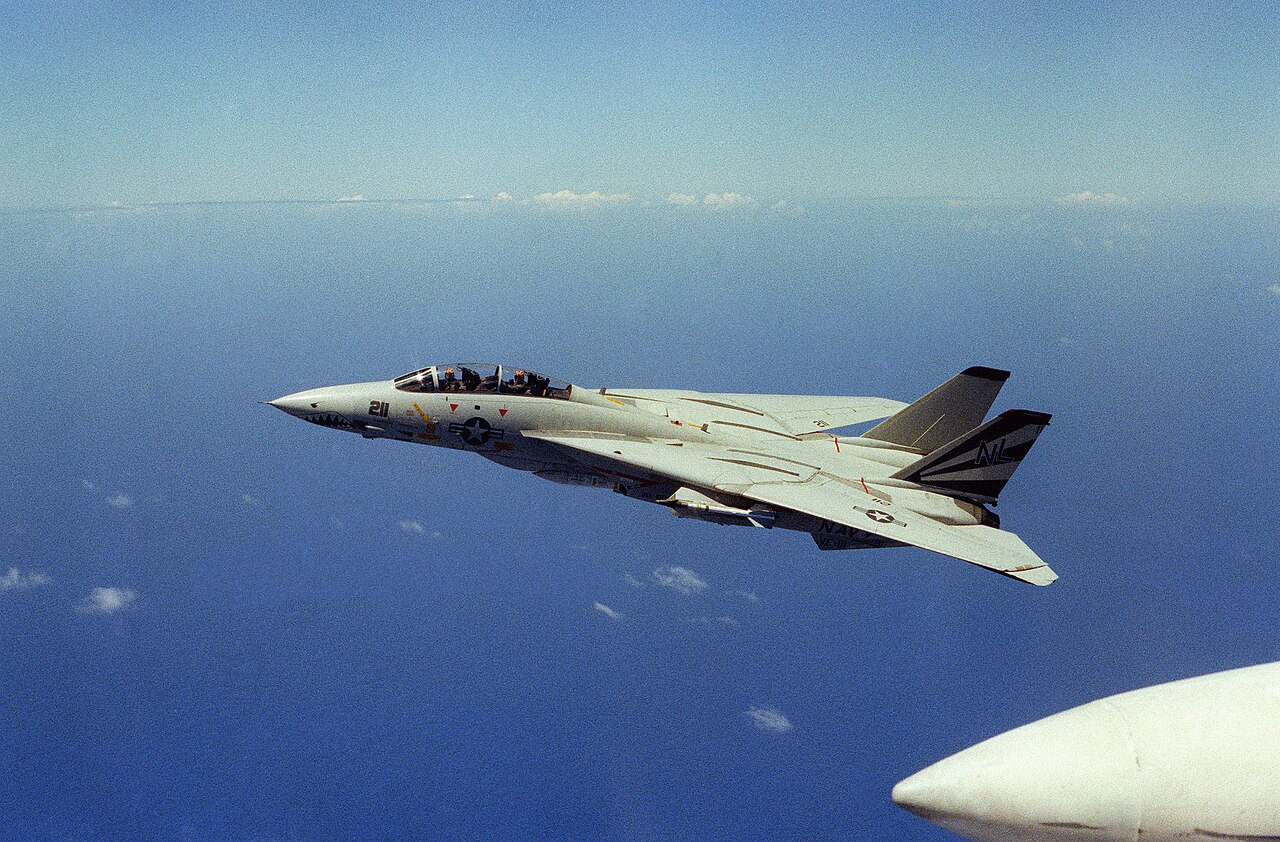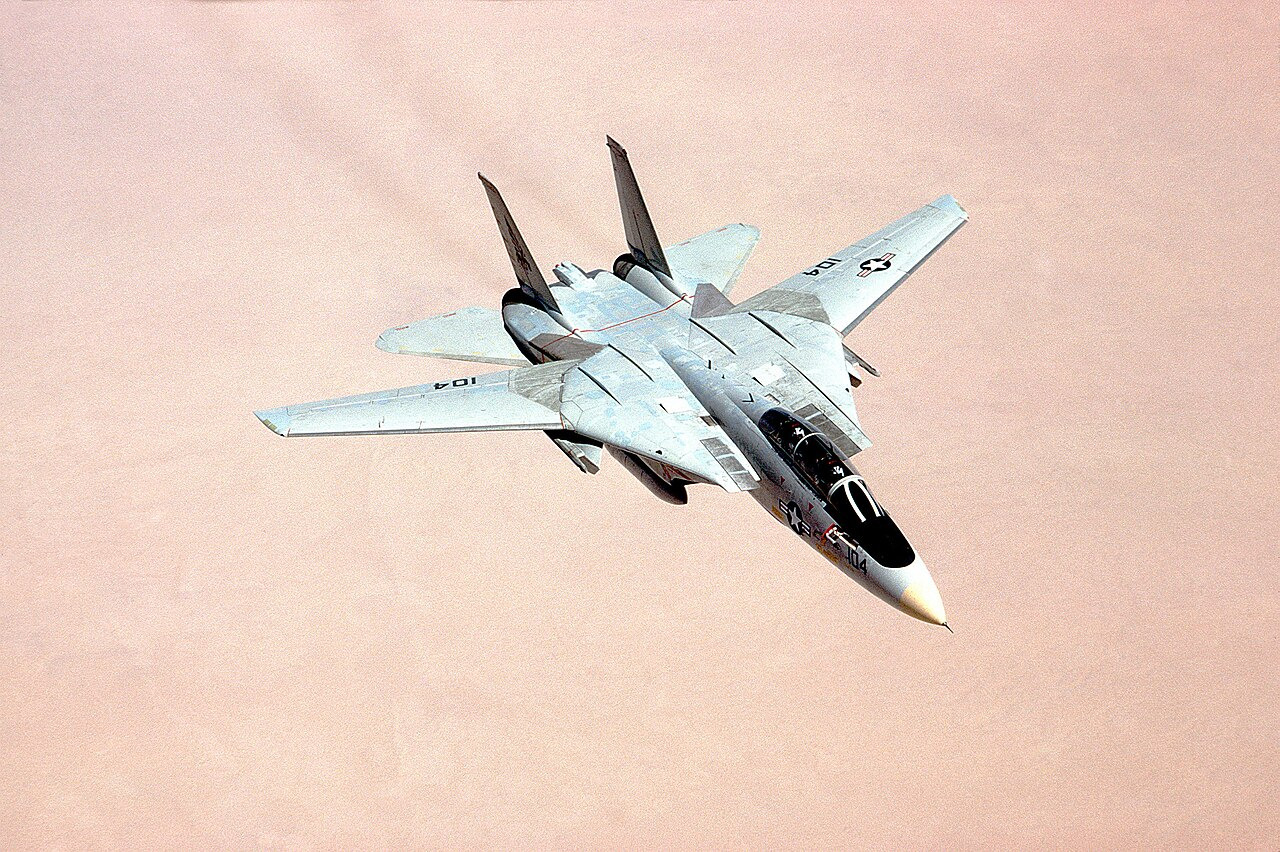F-14 Tomcat: The Iconic Fighter of the U.S. Navy
The F-14 Tomcat is one of the most iconic fighter jets in U.S. Navy history, serving from the 1970s to the mid-2000s. Its impressive design and performance made it a frequent subject in movies and documentaries, most notably in Top Gun, where Tom Cruise piloted this aircraft. In this article, we will explore the development background, specifications, key features, and significant operational episodes of the F-14 Tomcat.

Development Background of the F-14 Tomcat
The F-14 Tomcat was developed as a result of a competitive program initiated by the U.S. Navy in the late 1960s to introduce a new carrier-based fighter. At the time, the Navy was in urgent need of a new aircraft after the failure of the F-111B program, which was deemed too heavy and large for carrier operations. This led to Grumman Corporation developing a new high-performance fighter that would meet the Navy’s requirements—the F-14 Tomcat.
Key Specifications and Features
Aircraft Size and Weight:
• Length: 19.1 m (62.8 ft)
• Wingspan: Variable-sweep (Max: 19.5 m / Min: 11.6 m)
• Height: 4.88 m (16.0 ft)
• Maximum Takeoff Weight: ~33,724 kg (74,350 lbs)
Performance:
• Maximum Speed: Mach 2.34 (2,485 km/h)
• Combat Radius: ~926 km (575 miles)
• Climb Rate: 13,100 m/min (43,100 ft/min)
• Service Ceiling: ~15,240 m (50,000 ft)
• Engines:
• Pratt & Whitney TF30 turbofan engines (early models)
• F110-GE-400 turbofan engines (later models)
Armament:
• Air-to-Air Missiles:
• AIM-54 Phoenix (long-range)
• AIM-7 Sparrow (medium-range)
• AIM-9 Sidewinder (short-range)
• Gun:
• M61 Vulcan 20mm Gatling gun
Radar and Sensors:
• AWG-9 radar (early model) / AN/APG-71 radar (later model)
• Active Electro-Optical/Infrared Detection System
One of the F-14’s most distinctive features was its variable-sweep wing design, which allowed it to achieve high-speed maneuverability while maintaining excellent low-speed stability for carrier landings. Additionally, the AWG-9 radar system was the most advanced of its time, capable of tracking up to 24 targets simultaneously and engaging six of them at once.

Key Development Episodes
1. The Failure of the F-111B Program and the Urgency for the F-14
The failure of the F-111B program left the U.S. Navy in urgent need of a new high-performance fighter. Grumman was tasked with developing a replacement, leading to the rapid development of the F-14 Tomcat, which successfully made its first flight in 1970.
2. The Innovation of the Variable-Sweep Wing Design
The F-14 was among the first fighters to incorporate variable-sweep wing technology, allowing it to optimize performance across various speeds. This innovation proved particularly advantageous for carrier operations, setting the Tomcat apart from other fighters of its era.
3. AIM-54 Phoenix Missile and AWG-9 Radar System
The AIM-54 Phoenix missile, developed alongside the F-14, was a long-range air-to-air missile capable of engaging targets over 160 km (100 miles) away. Combined with the AWG-9 radar, the Tomcat became a formidable adversary, capable of simultaneous long-range engagement of multiple targets—a revolutionary capability at the time.

Operational History and Combat Episodes
1. The Iran-Iraq War (1980-1988): Iran’s F-14 Combat Success
Iran was the only foreign operator of the F-14, having acquired it before the 1979 revolution. During the Iran-Iraq War (1980-1988), Iranian F-14s played a crucial role, successfully engaging and downing several Iraqi MiG fighters. Reports indicate successful use of AIM-54 Phoenix missiles, helping Iran maintain air superiority over Iraq.
2. Libyan Aerial Encounters (1981 and 1989)
In two notable air combat incidents, the F-14 engaged Libyan fighters in aerial battles:
• 1981 Gulf of Sidra Incident: Two Libyan Su-22s attempted to engage U.S. Navy F-14s, resulting in both Libyan jets being shot down.
• 1989 Gulf of Sidra Incident: Two MiG-23s were intercepted and destroyed by F-14s, reinforcing the aircraft’s reputation in air superiority.
3. The Influence of Top Gun
The 1986 film Top Gun significantly boosted the F-14’s reputation, making it one of the most recognizable fighter jets in the world. The movie showcased the Tomcat’s maneuverability, speed, and striking design, inspiring many young aviation enthusiasts to pursue careers in the military.
4. The F-14’s Final Combat Mission in the Iraq War (2003)
During the 2003 Iraq War, the F-14 carried out its last major combat operations before retirement.
• It conducted precision bombing missions using laser-guided bombs and JDAMs.
• In September 2006, the last F-14 squadron was retired from the U.S. Navy, marking the end of its over 30-year service history.
Conclusion: The Legacy of the F-14 Tomcat
The F-14 Tomcat remains one of the most iconic and beloved fighter jets in aviation history. Its innovative design, superior performance, and combat effectiveness cemented its legacy as a symbol of American naval aviation. Whether through real-life combat engagements or pop culture representations like Top Gun, the F-14 will always be remembered as an aviation icon that defined an era.

** This post is based on information searched using ChatGPT-4.0σ, so please note that there may be some differences from the actual information**